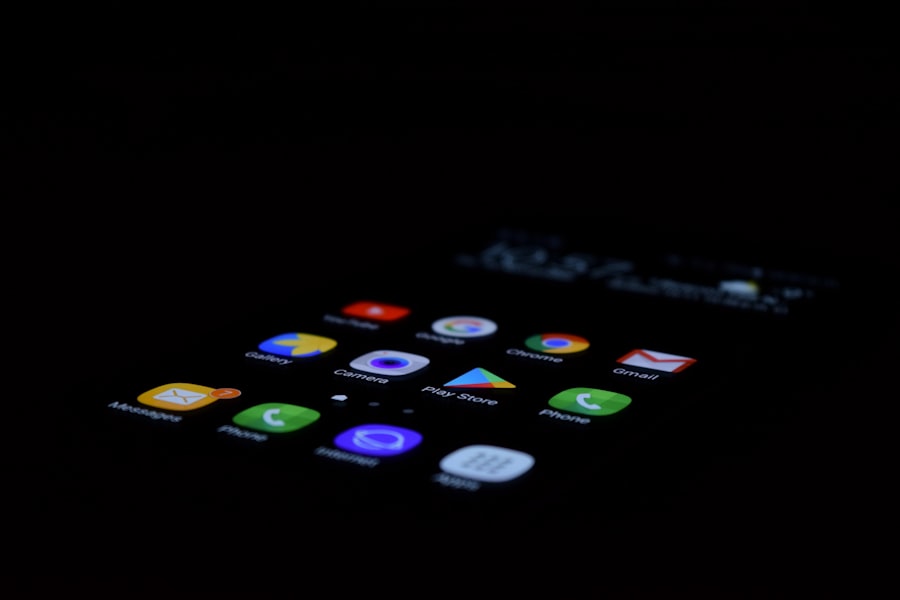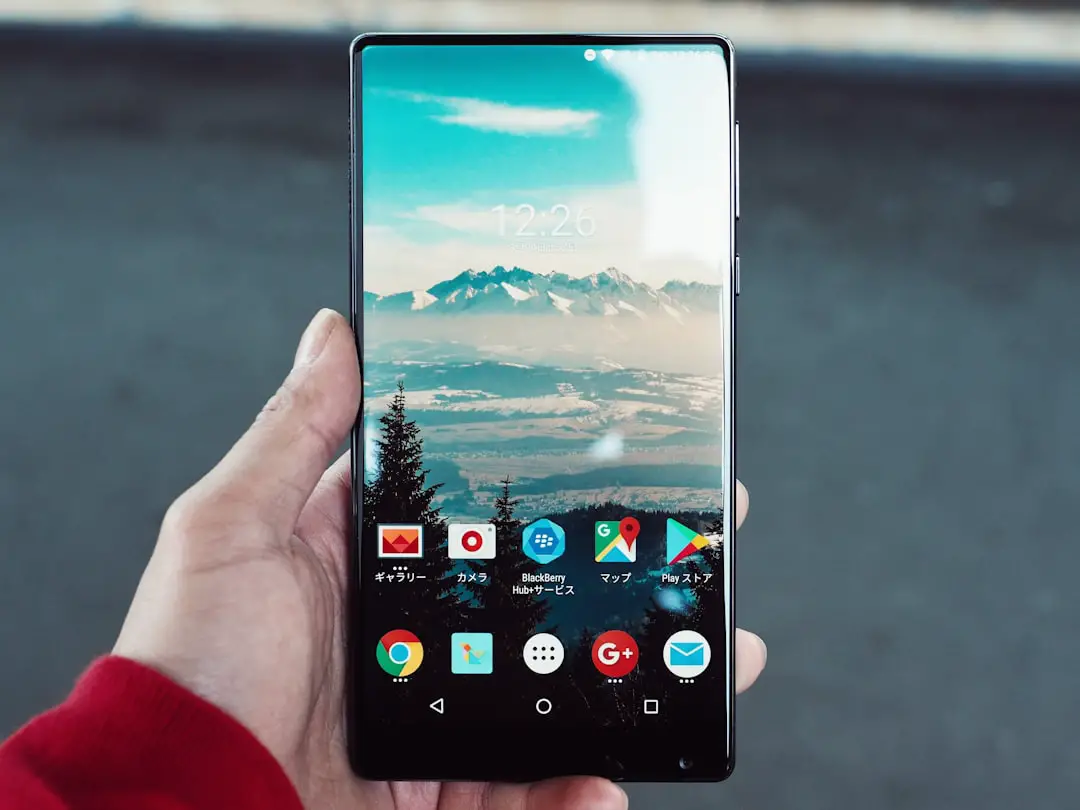Voicemail has long been a staple of mobile communication, serving as a digital answering machine that allows callers to leave messages when the recipient is unavailable. On Android devices, voicemail systems are typically integrated with the phone app, providing users with a seamless experience for managing missed calls and messages. The convenience of voicemail is undeniable; it allows individuals to receive important information even when they cannot answer their phones.
However, as communication preferences evolve, some users find themselves questioning the necessity of voicemail altogether. The Android operating system offers a variety of features that enhance the user experience, including customizable voicemail settings. While many users appreciate the ability to listen to messages at their convenience, others may prefer to disable this feature entirely.
This decision can stem from various reasons, including a desire for privacy, a preference for alternative communication methods, or simply the annoyance of managing multiple messages. Understanding how to disable voicemail on an Android device can empower users to tailor their communication preferences to better suit their lifestyles.
Key Takeaways
- Voicemail on Android allows users to receive and manage missed calls when they are unable to answer.
- Reasons for disabling voicemail on Android include preference for other communication methods, privacy concerns, and avoiding additional fees.
- To disable voicemail on Android, users can contact their mobile carrier, use a code or app, or adjust call forwarding settings.
- Alternative options for managing missed calls include using call forwarding, setting up a virtual assistant, or using a third-party voicemail service.
- Common issues with disabling voicemail on Android include difficulty finding the right settings and potential impact on call functionality.
- Re-enabling voicemail on Android can be done by contacting the mobile carrier or reversing the steps taken to disable it.
- Tips for communicating voicemail disabling to callers include updating voicemail greetings and informing important contacts directly.
- In conclusion, disabling voicemail on Android can be a personal choice based on individual needs and preferences.
Reasons for Disabling Voicemail
There are several compelling reasons why an individual might choose to disable voicemail on their Android device. One primary reason is the shift in communication habits brought about by the rise of instant messaging and social media platforms. Many people now prefer texting or using apps like WhatsApp and Facebook Messenger for quick communication, rendering traditional voicemail less relevant.
For these users, the thought of checking voicemail messages can feel outdated and cumbersome, leading them to seek alternatives that align more closely with their current communication preferences. Another significant factor is privacy concerns. Voicemail can sometimes be seen as a vulnerability, especially if sensitive information is left in messages that could be accessed by others.
Disabling voicemail can provide peace of mind for those who wish to minimize the risk of unauthorized access to their messages. Additionally, some users may find that they receive an overwhelming number of spam calls, leading to a cluttered voicemail inbox filled with unwanted messages. In such cases, disabling voicemail can help streamline communication and reduce distractions.
Step-by-Step Guide to Disabling Voicemail on Android

Disabling voicemail on an Android device can vary slightly depending on the manufacturer and the version of the operating system. However, the general process remains consistent across most devices. To begin, users should open the Phone app, which is typically represented by a green icon with a white telephone receiver.
Once in the app, they should navigate to the settings menu, which can usually be accessed by tapping on the three vertical dots in the upper right corner or by selecting “Settings” from the menu. Within the settings menu, users should look for an option labeled “Voicemail” or “Call Settings.” Tapping on this option will lead them to a submenu where they can manage their voicemail settings. Depending on the carrier and device, there may be an option to disable voicemail entirely or to change the settings so that calls are redirected elsewhere. For instance, some users may choose to forward calls directly to another number or to a different messaging service instead of allowing them to go to voicemail.
After making the desired changes, it is essential to save the settings before exiting the menu. Users should also consider testing their phone by calling it from another device to ensure that voicemail has been successfully disabled. If everything is set up correctly, callers should hear a message indicating that the user is unavailable without being directed to leave a voicemail.
Alternative Options for Managing Missed Calls
| Options | Pros | Cons |
|---|---|---|
| Call back later | Allows for personal interaction | May not be convenient for the caller |
| Send a text message | Quick and non-intrusive | May not convey the same level of urgency |
| Use an automated response system | Provides immediate acknowledgment | Can feel impersonal |
For those who decide to disable voicemail, it is crucial to explore alternative options for managing missed calls effectively. One popular method is call forwarding, which allows users to redirect incoming calls to another number or service. This feature can be particularly useful for individuals who want to ensure they do not miss important calls while still avoiding traditional voicemail systems.
Users can set up call forwarding through their phone settings or by contacting their mobile carrier for assistance. Another alternative is utilizing third-party applications designed for call management. Numerous apps are available on the Google Play Store that offer features such as call screening, blocking unwanted calls, and providing visual notifications for missed calls.
These applications often come with customizable settings that allow users to tailor their experience according to their preferences. For example, some apps can send automatic text responses to callers when a user is unavailable, informing them that they will get back in touch soon. Additionally, users may consider setting up an email or messaging service that allows callers to reach them through alternative means.
By providing an email address or encouraging text messages instead of phone calls, individuals can maintain open lines of communication without relying on voicemail. This approach not only streamlines communication but also allows users to manage their time more effectively.
Troubleshooting Common Issues
While disabling voicemail on an Android device is generally straightforward, users may encounter some common issues during the process. One frequent problem is that changes made in the settings do not seem to take effect immediately. In such cases, it may be helpful to restart the device after making adjustments to ensure that all settings are properly applied.
Additionally, users should verify that they have followed all steps correctly and check for any software updates that might affect functionality. Another issue could arise from carrier-specific settings that override user preferences. Some mobile carriers have default configurations that automatically enable voicemail regardless of user settings.
If this occurs, contacting customer support for the carrier may be necessary to resolve the issue. Representatives can provide guidance on how to disable voicemail at the network level and ensure that user preferences are honored. Users may also experience confusion regarding how missed calls are handled after disabling voicemail.
It is essential for individuals to understand that without voicemail, callers will not have an option to leave messages when they cannot reach them directly. This change may require some adjustment for both the user and their contacts as they adapt to new communication norms.
Re-Enabling Voicemail on Android

If a user decides later on that they would like to re-enable voicemail on their Android device, the process is typically just as straightforward as disabling it. Users should return to the Phone app and navigate back into the settings menu where they previously disabled voicemail. In most cases, there will be an option available to turn voicemail back on or restore default settings.
Once voicemail has been re-enabled, it is advisable for users to test the functionality by calling their own number from another device. This test will confirm whether callers are once again directed to leave messages in the voicemail inbox. If any issues arise during this process, checking with the mobile carrier may provide additional insights into any specific configurations required for reactivation.
In some instances, users may also want to customize their voicemail greeting upon re-enabling the feature. This can be done through the voicemail settings or by calling into their voicemail inbox directly and following prompts provided by their carrier. Personalizing greetings can enhance caller experience and provide important context about when they can expect a response.
Tips for Communicating Voicemail Disabling to Callers
When disabling voicemail, it is essential for users to communicate this change effectively with their contacts. One practical approach is sending out a mass text message or email informing friends, family, and colleagues about the decision. This message should clearly explain that voicemail has been disabled and provide alternative methods for reaching them—such as texting or emailing—when they are unavailable.
Additionally, users might consider updating their social media profiles or status messages to reflect this change in communication preferences. By doing so, they can reach a broader audience and ensure that anyone attempting to contact them is aware of how best to do so without relying on traditional voicemail systems. For those who frequently receive business calls or important communications, it may be beneficial to set up an automatic text response feature through third-party applications or services.
This response can inform callers that they will not be able to leave a message but encourage them to reach out via text or email instead.
Conclusion and Final Thoughts
Disabling voicemail on an Android device can be a practical decision for many users looking to streamline their communication methods in today’s fast-paced digital world. By understanding how to disable and manage missed calls effectively without relying on traditional voicemail systems, individuals can tailor their mobile experience according to their preferences and lifestyle needs. Whether opting for call forwarding, utilizing third-party applications, or communicating changes clearly with contacts, there are numerous ways to navigate this transition smoothly.
As communication continues evolving with technology advancements, users must remain adaptable and open-minded about how they manage interactions with others. Embracing alternative methods while being mindful of privacy concerns can lead to more efficient and satisfying communication experiences in both personal and professional contexts.
If you are looking to learn how to turn off voicemail on Android, you may also be interested in reading an article on AppsSoftwares about the best voicemail apps for Android. These apps can help you manage your voicemail more effectively and provide alternative solutions for handling missed calls. Check out the article here for more information.
FAQs
What is voicemail on Android?
Voicemail on Android is a feature that allows callers to leave a voice message when the recipient is unable to answer the phone.
Why would someone want to turn off voicemail on their Android phone?
Some people may want to turn off voicemail on their Android phone if they prefer not to receive voicemail messages or if they use alternative methods of communication.
How can I turn off voicemail on my Android phone?
To turn off voicemail on an Android phone, you can contact your mobile service provider and request to have the voicemail feature disabled. Alternatively, you can also dial a specific code on your phone to deactivate voicemail.
Can I turn off voicemail on specific contacts only?
Unfortunately, it is not possible to turn off voicemail for specific contacts only. Voicemail settings apply to all incoming calls on your Android phone.
Will turning off voicemail affect my ability to make and receive calls?
Turning off voicemail on your Android phone will not affect your ability to make and receive calls. It simply disables the voicemail feature, and you will no longer receive voicemail messages.
